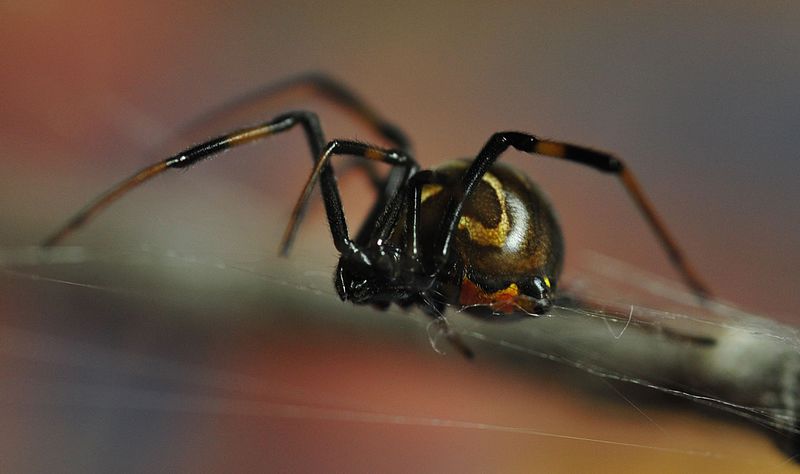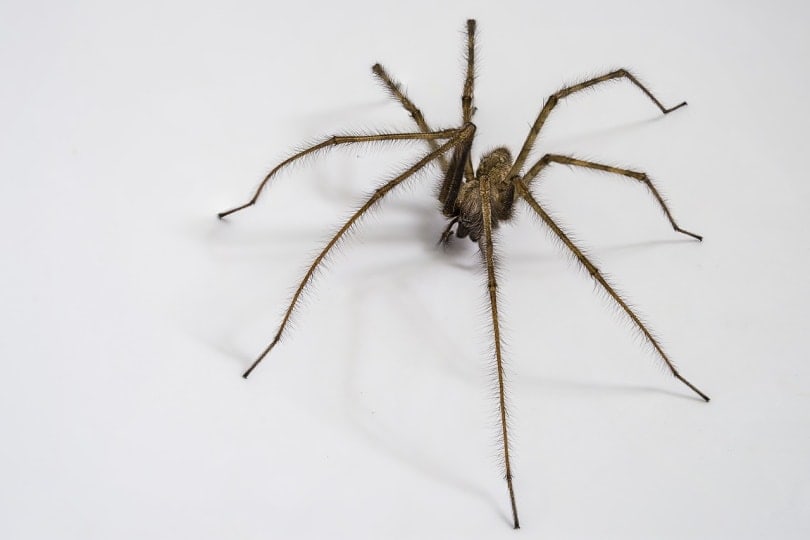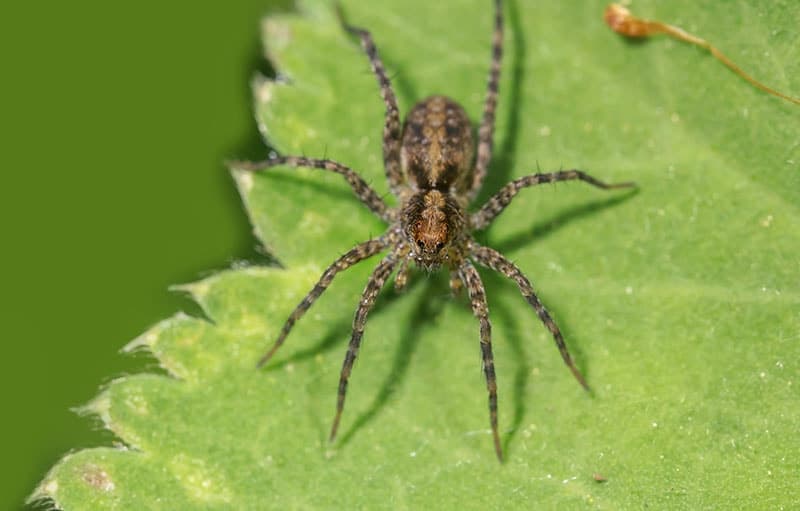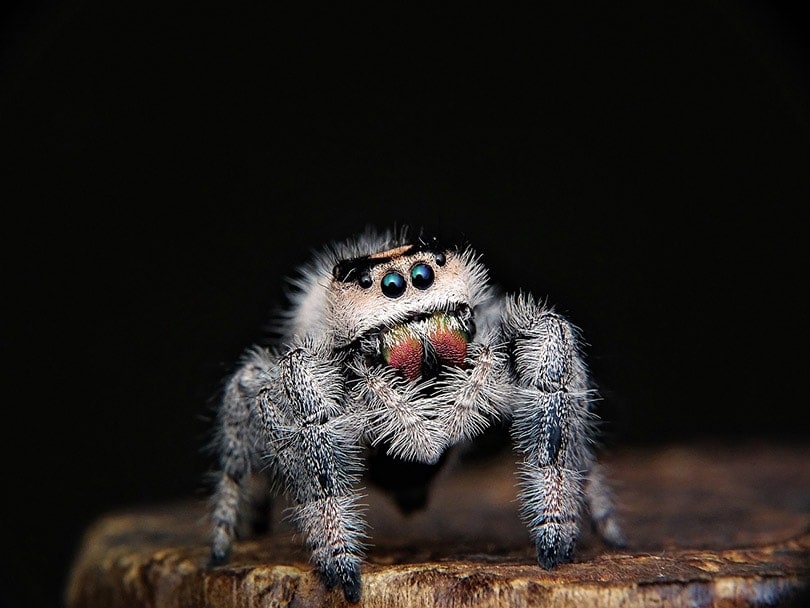If you’re like most of us, the thought of a spider anywhere in your home—poisonous or not—is enough to give you chills and prevent you from getting any sleep at night.
There are spiders everywhere, and Washington is no exception. While there are only two poisonous spider species in Washington, there are over 950 species of spiders that have been documented in the state that aren’t poisonous.
For our purposes in this guide, we’ll first look at the poisonous spiders, then list a few of the most common spiders you’ll find in Washington as well. Of course, you’ll want to be careful of the poisonous ones in the bunch and seek medical treatment right away if bitten. The common spiders, however, are simply a nuisance you’ll want to call pest control to get rid of.

The 6 Spider Species Found in Washington
1. Western Black Widow (Venomous)

| Species: | Latrodectus hesperus |
| Longevity: | 1 to 3 years |
| Good to own as a pet?: | No |
| Legal to own?: | Yes |
| Adult size: | 5 inches |
| Diet: | Carnivorous |
The western black widow spider is an extremely poisonous spider that is found all over the United States and in Washington state as well. This spider is easily identified by the red hourglass shape on its abdomen.
Female black widows are black, and they tend to eat their brown mates when they’re done mating. If a western black widow gets into your home, they’ll hide in dim, dark areas that aren’t frequented very often. They eat flies and other insects. The natural predators of this poisonous spider are birds and other species of spiders.
If you are bitten by a western black widow, then you need to seek medical treatment right away.
2. Yellow Sac Spider (Venomous)

| Species: | Cheiracanthium |
| Longevity: | 2 years |
| Good to own as a pet?: | No |
| Legal to own?: | Yes |
| Adult size: | ¼ to ⅜ inches |
| Diet: | Carnivorous |
The other poisonous spider species found in Washington is the yellow sac spider. These spiders are said to be very powerful, with fangs that can pierce the human skin in an instant. While no deaths have ever been reported from a yellow sac spider bite, they are still poisonous. In fact, many bites that have been attributed to the brown recluse spider are actually yellow sac spider bites. Still, if you’re bitten, you need to seek medical treatment.
The yellow sac spider likes to hang out flattened silk tubes during the day; they don’t weave webs and walk around at night. If you find one in your home, it’ll probably be walking on a vertical surface, such as a wall.
They are carnivores who eat flies and other insects. Natural predators include birds and foxes.
3. Giant House Spiders (Common)

| Species: | Eratigena atrica |
| Longevity: | Several years |
| Good to own as a pet?: | No |
| Legal to own?: | Yes |
| Adult size: | 10 to 15 mm |
| Diet: | Carnivorous |
Giant house spiders, as the name would suggest, are common in Washington and are the biggest spiders in the state. While this species isn’t poisonous, it can be scary to find one crawling on your wall in the middle of the night.
They grow to 10 to 15 mm in size, and the males can have legs up to 3 inches in height. These spiders can be found under rocks and in caves as they prefer a cool, dry environment. Residents of Washington are more apt to see these giant house spiders in their homes during the winter months, as they don’t like the cold temperatures.
While these spiders won’t hurt you, it’s best to call in pest control if you see more than a couple to prevent an infestation.
4. Hobo Spider (Common)

| Species: | Eratigena agrestis |
| Longevity: | 2 years for females; A few months for males |
| Good to own as a pet?: | No |
| Legal to own?: | Yes |
| Adult size: | 0.6 inches |
| Diet: | Carnivorous |
The hobo spider is another common spider in Washington and is often confused with the giant house spider because they have the same appearance. At one time, the bite of the hobo spider was thought to cause necrosis, but since no one ever died, it’s been taken off the dangerous spider list.
This species can be found anywhere where there are cracks and crevices to build a tunnel. They aren’t very strong climbers, so you probably won’t find one crawling along your walls.
5. Jumping Spiders (Common)

| Species: | Salticidae |
| Longevity: | 1 to 3 years |
| Good to own as a pet?: | No |
| Legal to own?: | Yes |
| Adult size: | 0.5 inches |
| Diet: | Carnivorous |
The jumping spider species is common all across the United States, and they have their fair share in Washington. These spiders are not poisonous, but they will scare you by jumping from one place to the other. They grow to small or medium size, but their legs are short.
They can jump distances of 45 times the size of their bodies. They are usually found walking around on walls and windowsills in homes. While they aren’t poisonous, if you see more than a couple, it’s best to get a professional pest control company to come out and treat your home before an infestation occurs.
6. Orb-Weaver Spiders (Common)

| Species: | Araneomorphae |
| Longevity: | 1 year |
| Good to own as a pet?: | No |
| Legal to own?: | Yes |
| Adult size: | 2 to 2.3 cm |
| Diet: | Carnivorous |
The orb-weaver spider is another spider species common to Washington. These are the colorful spiders that spin large webs in the forests and in your garden. This species is not poisonous. They are also not aggressive and feed on creatures that get caught in their large webs. They’ll most often be found in your garden and very seldom venture into people’s homes.

Conclusion
These are a few of the species of spiders that are commonly found in Washington. While most of these are not poisonous, there are two that are. So, if you see the western black widow or a yellow sac spider anywhere on your property or in your home, you need to call in reputable pest control right away to treat the home and stop the infestation.
Of course, you’ll want to keep a handle on any spider infestation on your property or in your home as well, because who wants to live with spiders, right?
Related Read:
Featured Image Credit by macrotiff, Pixabay
